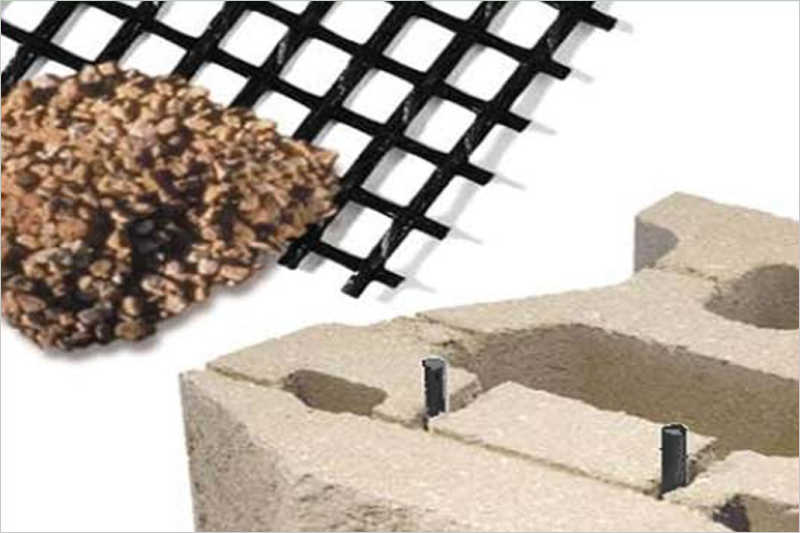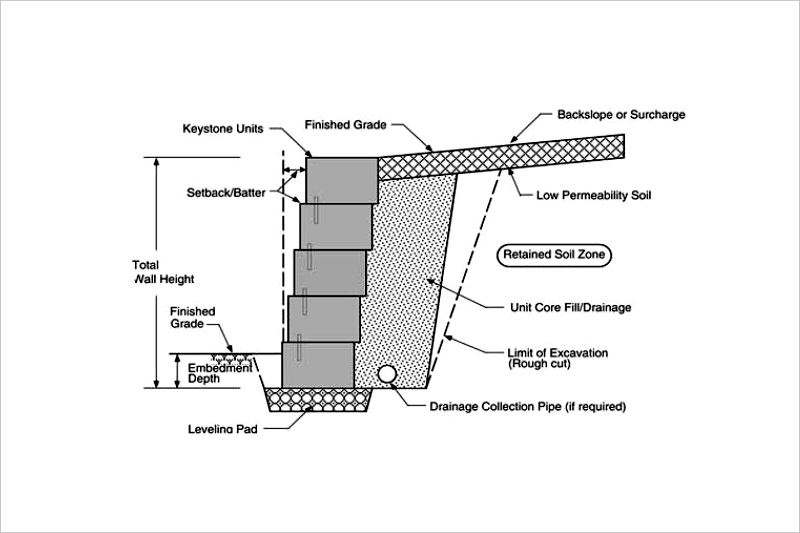Keystone Retaining Wall System - Technical

The two most common retaining wall structures built today are simple gravity walls and larger reinforced soil wall structures. KEYSTONE® offers products and specific design methodology for both structure types.

One of the most basic types of retaining walls, the gravity wall, relies on its mass and cross-sectional geometry to resist the earth pressure the is exerting force to move the structure in a lateral direction. KEYSTONE® retaining walls are able to resist lateral pressure with their unit weight and deep embedment shape. The mortarlessm, yet strucuturally interconnected KEYSTONE® units also promote the freeflow of water drainage to prevent hydrostatic loads. For low, non-critical applications, KEYSTONE® products make highly cost-effective gravity wall structures.

For taller or more critical walls, KEYSTONE® units are combined with soil reinforcement options (such as extensible geogrids, geotextiles, inextensible tie-back anchor or galvanized steel ladder reinforcing) to create large composite structures. With this properly designed combination, the reinforced soil mass can support greater earth pressures and surcharge loads. These composite structures have permitted the construction of retaining wall structures over 18m high.

SInce the early 1980's, geogrids have proven successful in providing durable soil reinforcement for the retaining wall industry. Proper design methodology today incorporates the laboratory testeds connection strength of concrete units and geogrid in all reinforced retaining wall systems. Geogrids are made from high-density polyolefins of high-tenacity woven polyester yams.
